The good news is that you probably already you need at home to get started doing shorter bushwalkers.
Good gear makes your walk safer and more enjoyable. You don't need the fanciest gear; you just need gear appropriate for the conditions and your plan. You don't need to take everything, the lighter your pack, the more you will enjoy walking. If your gear can have multiple purposes, it can help save weight (e.g. a phone that is also a camera and GPS).
Do consider the consequences of an item suffering catastrophic failure such as damage, loss or flat batteries. For example, if a mobile phone is used for communication, photography and navigation, then all these tasks are lost if the phone ceases to work or is broken. Backups may be possible in a group where there are two or more of each critical item.
Following is a gear list is for most popular day walks in temperate environments that do not require specialised equipment. Some environments like alpine areas and deserts require more planning and equipment. Consider how you might adjust this list considering your needs and the forecast conditions. If you want more information on any item, tap the title to unfold more info and suggestions.
Carrying
A good quality, comfortable backpack, which has been well fitted, is helpful. You can start on shorter walks with what every backpack you have lying around home. A school style pack is fine. To get started don't feel the need to go out and spend a lot of money.
A good pack will hold about 30l, fit comfortably and have a waist buckle. Zippers tend to break easily so generally better to use packs with clips.
Backpacks are not waterproof and keeping your gear dry is really helpful. If there is a forecast for rain or a plan for creek crossings, use a large heavy-duty garbage bag inside your pack and put everything you want to keep dry inside. Also, never pack water bottles or other liquids inside your waterproofing; if they leak it is not fun.
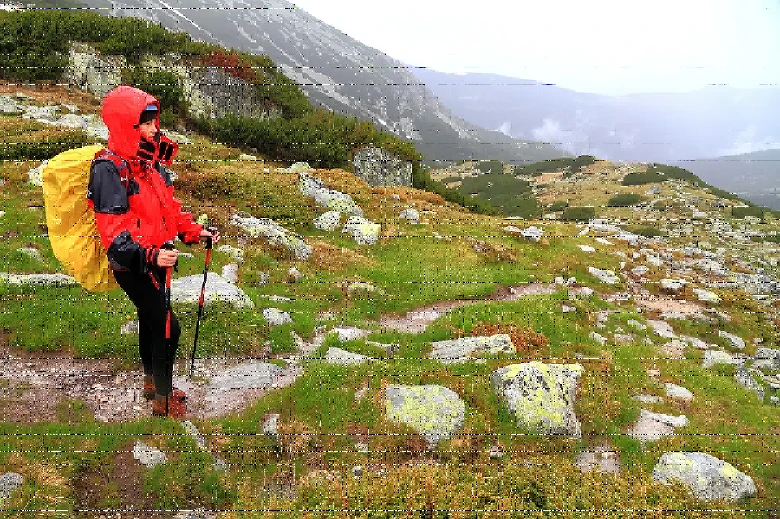
What to wear on track
The weather may not be hot, but UV light is strong in Australia. A hat is a good part of your overall sun protection. A hat with a good peak is also helpful in the rain, to keep some of the water off your face (especially useful if you wear glasses). A large flap at the back keeps the sun off your neck.
Sunglasses protect your eyes from the strong UV light. They are also helpful on windy days to help protect your eye from drying out and from dust particles. I like polarised sunglasses that wrap around the side (yes they look ugly); they are comfortable and provide good protection.
A quick-dry shirt with a collar and long sleeves (short sleeve is okay too) provides good sun protection, is lightweight and works as part of a layering system to keep you warm in colder weather. Avoid cotton shirts of any kind, if they get wet, they do not insulate but instead, make you colder very quickly. Merino wool is great (although expensive) and many synthetic fabrics work well (although get smellier more quickly).
Consider a long sleeve shirt with collar for better sun protection
There are many great options for what you wear on your legs so is not possible to make one recommendation. Let me give you some great options, and you choose what is best for you.
When choosing pants, think about the following:
1) Sun protection. Look at UPF of the material and total coverage.
2) How it performs when wet. How quickly does it dry? Does it restrict your movement?
3) Temperature regulation. Will it work well on a warm day? Will it be helpful as a layer on a cold, windy day? Will it still keep you warm if wet? Does it wick sweat away from your skin?
4) Durability. Will the material be okay when rubbing up against rocks and prickly brushes?
5) Stink factor. Materials that are anti-microbial are less smelly over time.
6) Comfort & style. At the end of the day they need to also feel comfortable to wear.
I tend to wear quick-drying shorts (with sunscreen) on warm days (even if raining). When cold or windy then I will wear thermal leggings with shorts over the top (stylish). But - I am a shorts kind of guy, so this does not work for everyone.
A popular choice are long stretchy loose-fitting pants (nylon with about 5% spandex), these tend to perform well on all the points above if you are comfortable with long pants).
Another choice that is growing in popularity are leggings (not cotton). Very popular for day walks, still comfortable for longer walks but some do get stinky after a few days.
There is one fixed rule: no cotton pants, especially not denim jeans. These are terrible once wet, take a very long time to dry (probably not for the rest of the trip), cause chafing and transfer body heat out in wet, cold conditions. But on short walks on sunny days these are fine if you are comfortable with them
Got some pants and not sure how they will cope in the rain? A pretty good test is to take your pants out of the washing machine, put them on wet and go for a walk to see how they perform. Can you get them on and off easy enough? Do they still keep you warm? Can you walk comfortably in them?
I am a fan of merino undies. They are comfortable, wick away sweat and smell fresh as a daisy on those long hot days (okay, they stink less). Look at boxer briefs; these are form-fitting but longer than normal briefs, which can help prevent chafing. Some women, in particular, seem to prefer bikini brief type cuts (some guys and gals prefer g-string), so go with whatever works for you, but this is a good starting point. Ohh and watch out for seams; the hip belt on your pack will be squeezing you, so the lower profile seam the better.
If merino does not work for you, check out synthetic blends or quality bamboo fibre. Bamboo is slow to dry and can be cool when wet, so merino really is better.
Consider any continence needs when planning underwear. If you take pads or other continence aids, remember to pack enough snap-lock bags to contain the used products (they can't be placed in the toilets or buried as they do not decompose).
As for a bra, try a comfortable sports bra, they are generally well designed for comfort and with materials that cope well with activity.
Your feet will be up close and personal with the track, so spend a bit of time thinking about socks. If socks are too thick, your feet will get too hot and sweaty, and you'll get blisters. Too thin and you run the risk of causing blisters through rubbing. There is a big happy space in the middle, so don't stress too much -- just get some sock that works well for you.
Think about medium-thickness socks, nicely fitted, that use a blend of Merino Wool, Polyamide, Elastane (or other similar fibres). This blend is stretchy, fit well, wick sweat away and suit a range of temperatures. Socks don't last forever so you will need to update them when they start to thin out on the bottom.
Comfortable shoes or boots make walks much more enjoyable. Don't stress over the brand; find closed in footwear that fit you well, are comfortable and lightweight. Generally, I prefer walking in simple runners, I do not usually wear boots on day walks. But when walking in muddy, snow/ice or really rocky areas I prefer boots. Waterproof boots (leather or synthetic) are helpful in rain and mud; but remember they are only waterproof up to their opening (if they are actually waterproof - many aren't), and then they become little buckets.
When starting out with local bushwalks, just wear what comfortable sneakers you already own, just make sure they have some grip and are comfortable.
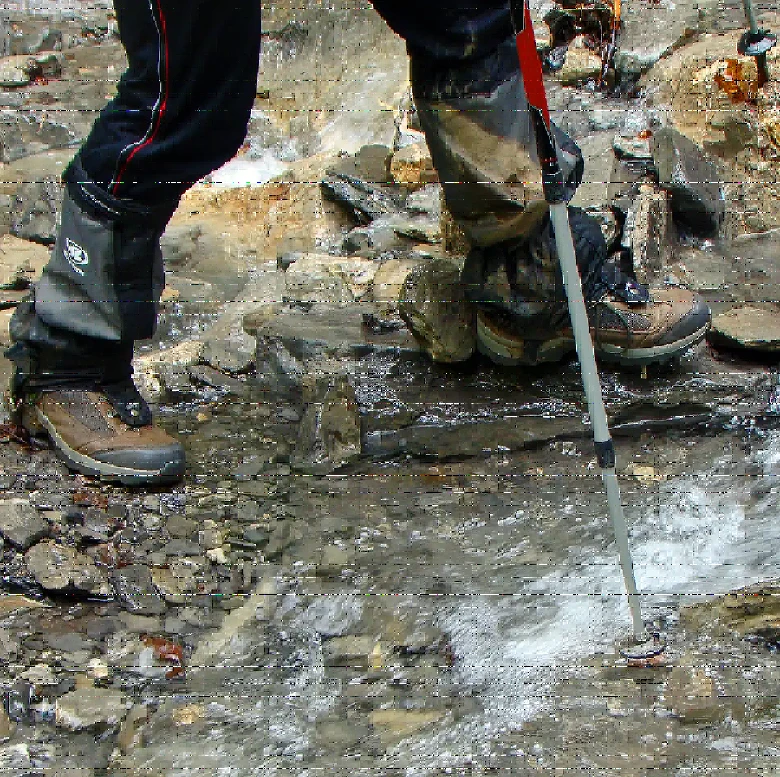
Gaiters protect your trousers, socks and legs from plants but also help keep rocks, rain, mud and snow out of your boots. Most people do not wear them on short walks, but if in scratchy narrow track areas they can be nice.
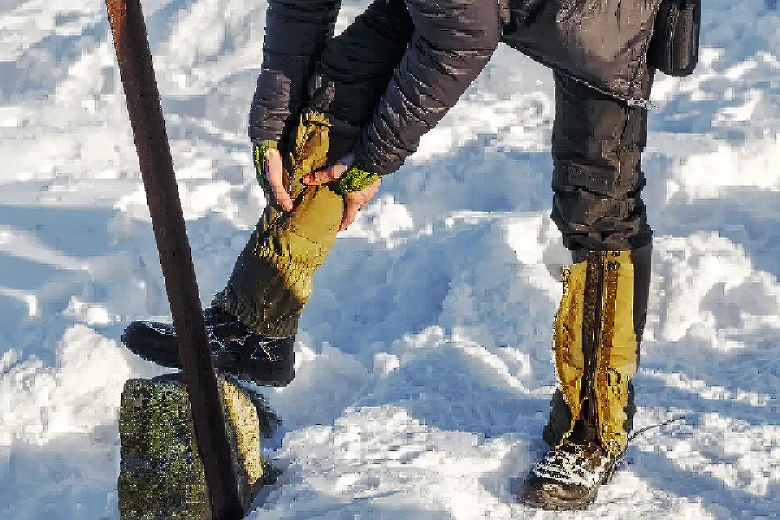
Trekking poles are one of those highly personal bits of gear. Most people either love them or loathe them. I have tried a bunch of them and want to like them, but I find them annoying. Still, I know many people who swear by them. They do take a bit of getting used to and do have their place.
Trekking poles are most useful on river crossings. They can also save weight by also acting as poles for some tents, or as a monopod for your camera.
If your knees or ankles are not very stable then trekking poles used well, may provide extra stability. You need to train with them to avoid causing injury, as poles are just shifting weight from one part of your body to another.
I know many people love them and find them a great bit of gear, so if you're one of them, pack your poles.
As with your boots, pegs and other gear, make sure you wash the base of your trekking poles well before heading to the start of the track, to ensure you're not transferring any dirt-borne diseases.
Have near the top of pack & put on as conditions dictate
For short walks you can plan around the weather, but if there is a chance of rain or getting stuck out in the cold then a raincoat with a hood is important. Rain is not 'bad' weather; walking in the rain can be enjoyable. A good quality rain jacket with a waterproof hood makes all the difference. Keeping your torso dry and warm helps protect you from hypothermia, but also allows you to enjoy walking in the rain. Rain jackets are a helpful part of staying warm on windy days.
Temperatures can feel much colder when exposed to wind and humidity; wind chill is a big deal and can cool your body down very quickly. Using a rain jacket to protect yourself from the wind will significantly improve the effectiveness of a warm jacket.
You may have an unplanned long wait so good to always have a warm jacket even if at the bottom of you pack and never comes out
As a general rule it is better to carry and use 2-3 thinner layers (such as thermal tops) than just one top, but there is something more snuggly about a nice warm jumper.
A buff (bufanda is Spanish for scarf) is simply a tube of material (such as merino wool). They vary greatly in thickness and length but primarily serve as a sock for your neck. If you like them (and my wife loves hers), they are versatile, lightweight and good for fine-tuning comfort. I think they are nifty.
By versatile I mean they can act as a scarf, headband, beanie, balaclava, hairband, wristband (for wiping sweat from your face) or even a small towel. They also fill the gap around the neck of a jacket to help keep more warm air in. They are useful for sun protection and also against the cold.
There are lots of styles, materials and lengths. We have found that medium weight merino wool works best. Size varies a bit, but look for something about 50cm long and 25cm wide when laid flat, and really stretchy.
A beanie will be especially handy in colder climates. A good quality buff is a versatile substitute for a beanie. I prefer thicker merino wool or synthetic fleece material.
If you feel the cold more then a balaclava might be preferred. A thin balaclava and a beanie (or buff) is going to be more versatile.
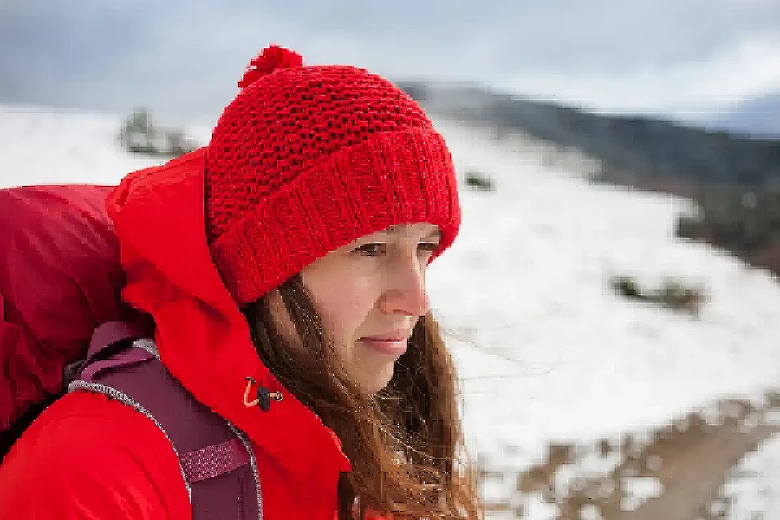
Depending on the time of year you're walking, their maybe a chance for a dip. Some people will take a dip in their underwear, but just be mindful of those around you.
A small lightweight towel is very handy and I carry one on every walk. I use a microfibre tea towel that I bought from the supermarket. I can't wrap it around me, but it drys me off well.
A towel is not just for a swim. You can wet one corner and use it to wash yourself down after a day walking. Dry your hair if it has been raining. Wring out wet clothes inside the towel to dry your clothes out extra quickly (repeat the process, wringing out your towel in between, to get your clothes surprisingly dry). And so much more.
Personal hygiene
Toilet paper is always handy. Carry your toilet paper in a snap-lock bag to keep it dry and to avoid unravelling. You need to bring your own paper for the toilets and also in case nature calls while walking. If there is no toilet then, either bury the paper or preferably carry it (in a plastic bag) and empty at the next toilet.
For most day walks this is really just a back up so can sit at the bottom of you pack.
Do not underestimate the value of this little bottle. Regularly washing your hands with an alcohol-based hand sanitising gel is your best bet to keeping clear of tummy bugs on track. Unlike soap, you don't need water, and it is better for the local environment. Follow the instructions; Squirt a bit on your hand and rub your hands for a time. Clean under your fingernails and between your fingers as well. Use it every time before eating and after visiting the toilet.
A small (50 mL) flip-top bottle from your supermarket or chemist is perfect.
Pro Tip: Encourage everyone in your group to carry their own one in their pocket, and encourage them to use it - especially before eating. Also, have an extra bottle with your toilet paper.
Don't forget menstrual products as needed with some extra snap lock bags. Used products should be double-bagged and carried out (they can't be placed in the toilets or buried as they do not decompose).
If doing a longer walk with a pre-pubescent girl it would be worth carrying some extra pads just in case she develops her period whilst on track.
It is important to keep up good hygiene practices on track as you would at home.
If you wear glasses for walking then seriously consider packing some contact lens as backups.
Glasses can get broken or lost so a back up is a good idea. Also on rainy days, glasses may get spotty and fog up under your rain hood, so you may prefer wearing contacts on those days anyway.
PRO TIP: If you are wearing glasses, then wear a peaked cap under your rain jacket hood to keep your glass as dry as possible. Also, a small bulldog clip (from your stationary draw) is great to attach your cap to your rain hood.
Read more about glasses.
If you normally wear hearing aids then still consider wearing them on track. Some people prefer not to, and that is fine as well. They can be extra handy in the hut or in case there is an emergency where easier communication will help.
Clean them and have fresh batteries before you start.
Hearing aids tend to not cope well with water, so check your manual or chat with your audiologist about using your specific hearing aids on track. Most hearing aids will want to be packed away when it is raining (and don't work well inside the hood of rain jacket anyway).
A lightweight umbrella might help if it is not too windy, if you are keen to keep using your hearing aids in the rain.
PRO TIP: Huts and tents are very humid places, consider packing a small tub with desiccant to store you hearing aids overnight to help them dry out well.
Read more about hearing aids.
Health & Safety
You don't need to pack your whole wallet, save the weight. Do carry a few basics just in case. Your licence (or passport) for ID, Travel/ambulance insurance details, a credit card and some cash in a snap lock bag. Your plans may change; you may leave early or be evacuated for some reason, so having a few basics can help.
If you're taking any regular medications, pack them as well as any testing systems you need. You might have other medication or supplements that you take from time to time, make sure they are all packed (such as for hayfever).
If you have medication for emergency use (e.g. if you have asthma, heart conditions, allergies) make sure that it is packed in an easy-to-access but secure part of your pack. Also, pack your Emergency Medical Action Plan and explain this to others in your group. People can be much more helpful if they have had a calm moment to think about what needs doing before an emergency arises. Laminating your action plan is a good way to ensure it can be used in wet conditions.
Meet with your doctor to talk about your plans to do a long remote walk and talk about how to manage your health on track.
If you have portable testing equipment (such as blood sugar monitoring) please chat with your doctor about what happens if it fails (eg if it gets wet). You may want to pack a second backup test kit in a friend's bag if needed.
If any of your medication needs injections, you will need to carry your own sharps containers and skin cleaning swabs. Similar is true if you're using a catheter or any other medical equipment - you will need to carry it all out safely with you. There is no power or charging system in the huts. Wrapping your medicine in clothing and placing it deep in your pack will help keep it insulated and cooler on hot days. Make sure any medicine needed in an emergency is easily accessible, and your friends also know where it is and what to do with it.
A Personal Locator Beacon (similar to an EPIRB) is a small device that sends a signal via satellite saying that there is a life-threatening emergency and gives your location. Since there is very little mobile phone coverage in the area, these devices are the most reliable way to call for help in a life-threatening emergency.
There are other satellite messaging systems that also work for sending (and receiving) general messages and for use in emergencies. With satellite systems that are not dedicated to emergencies, use be mindful of battery management and ease of use in an emergency.

There are toilets at each of the huts, but sometimes nature may call while walking. Try to use the toilets where possible, but if you need to poop in the woods that is okay. To poo well, we dig a 15cm hole, do our business and bury it. The hole allows it to decompose quickly, reduce the risk of animals digging it up and stop other walkers from stepping in it (yuck). A small, lightweight trowel makes digging the whole much quicker and easier. A big snow peg will also do the job well.
A first aid kit helps deal with injuries and illness along the way. Hopefully, you don't need it, but you will likely dip into it for minor issues such as blisters, insect bites, small cuts or headaches. In the event of a potentially life-threatening situation, they can help improve the outcome. You also need to know how to use the items in your first aid kit. First aid is mostly a skill that you learn; the equipment helps in the process. Update your first aid training before hitting the track.
On the Overland Track I have helped people manage a broken arm, second-degree burns, severe blisters, asthma attack, splinters and gastro-type bugs. I have also spoken to people who have been evacuated due to severe back pain, potential stroke and heart conditions. I am not trying to freak you out; most people get through the trip unscathed. Being prepared helps you better deal with emergencies if they do arise among your friends or other people you meet on the track.
Carry a first aid kit for the group, but if you think you might split up for side trips and the like, then pack an extra so one is always available.
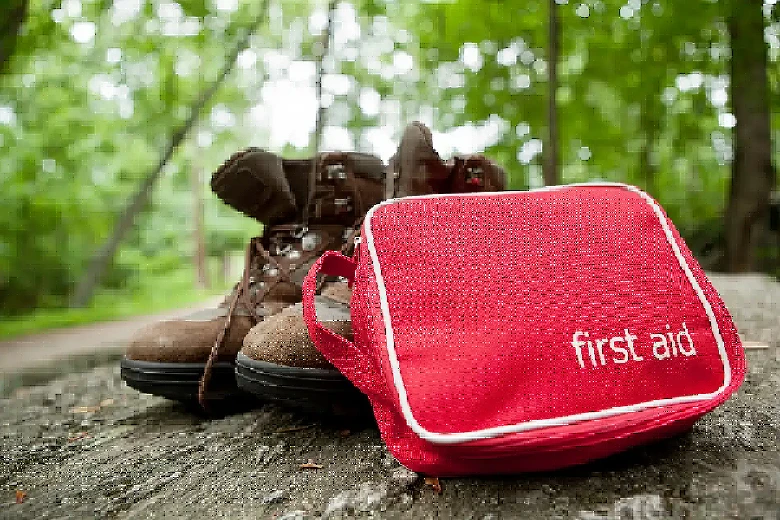
Stuff breaks - it just does. Boots fall apart, clothes rip, sleeping mats puncture, glasses frames get bent, zippers get stuck and so much more - but usually don't. Now if all this happens on one trip, then maybe you're doing something wrong, but even with good preparation some bit of gear still may fail.
Before you pack, carefully check all your gear for wear or damage - repairing at home is the best option.
What's in a repair kit? (just make it part of your first aid kit)
* Repair or duct tape
* Cable ties (about 10 medium)
* Pocket knife (with scissors or small pliers)
* Nylon cord (5-10 m)
* Sewing repair kit with safety pins
A map helps you plan and adjust your trip as needed, anticipate what is coming up and deal with emergencies. The map in this app is perfect for day to day needs, but phones die and batteries run flat, so a paper map is also essential.
You might want to make copies of the map onto A4 paper that you can refer to during the day, and protect your main map from damage. A map case or large snap lock bags are good ways to protect your map on windy and wet days.
I have never actually needed to use a compass on track, but I will always carry one. They help you orientate yourself and your map. They are very helpful if you lose the track, loose sense of direction or the weather closes in. Using a map and compass takes some skill; take the time to learn how to read and use a topographic map and compass.
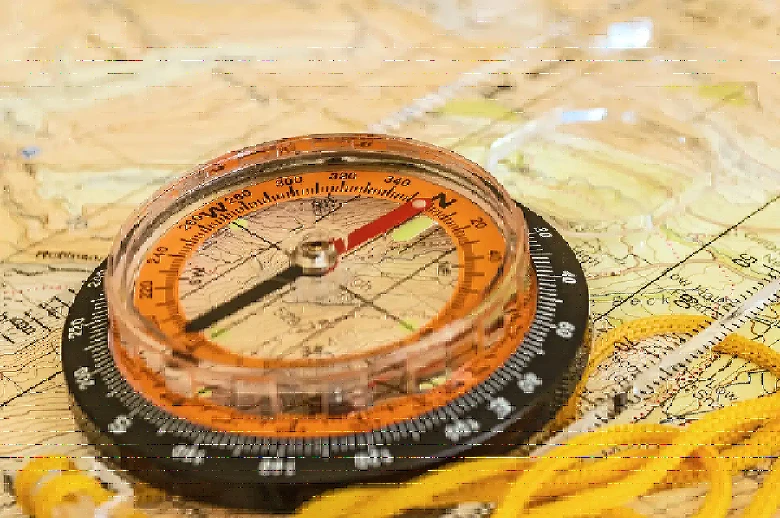
A small, lightweight knife can be convenient on track. You do not need a big hunting knife, just something small, sharp and safe to carry. Think about how you can use it for meal preparation and repairing gear. You will not be chopping down trees with it; small and lightweight is the go. (If you think you might need a big knife to be cutting down trees to build an emergency shelter, rethink the tent you are packing). I keep my pocket knife with my field repair kit, but sometimes it comes out at meal time.
Walk into most camping stores and people are keen to sell you 'hydration systems'. If you want to use a bladder and hose system, then that is great, but realistically a few cheap water bottles will do the job. I re-use plastic soft drink bottles on track. They are strong, light-weight and super cheap.
No matter what water carrying system you use, consider spreading your water across more than one container. If one then fails, you don't lose all your water. It also helps you better track how much water you are drinking.
If you are well-hydrated and it is not too hot, you'll want to carry about 2L of water (be prepared to carry more on warmer days) when walking a full day. If you are prepared to treat water along the way (assuming there are suitable creeks) then you don't need to carry much at all.
PRO TIP: I carry a 600ml sports drink bottle with a pop lid that I drink from. I also carry a couple of 1.25L soft drink bottles partially filled, that I use to fill up my main bottle during the day.
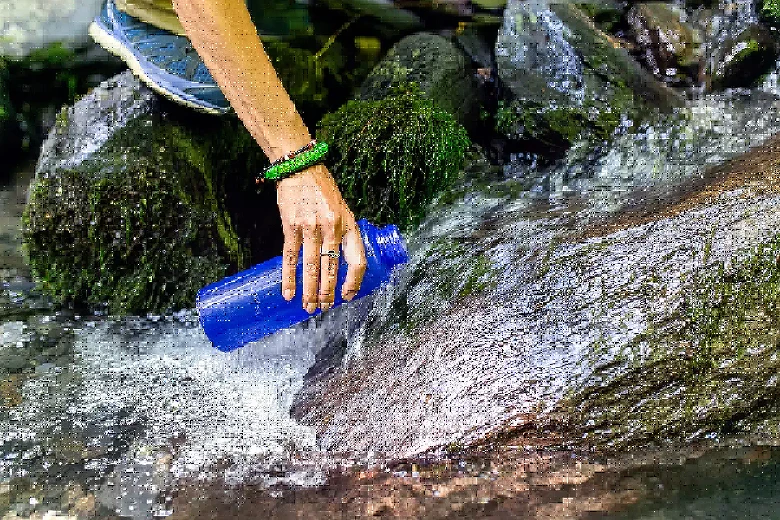
Carry some snacks and lunch depending on the length and location of the walk. Some walks may get you to a cafe for lunch, but carry a few extra muesli bars in case things don't go to plan.
Only long full day walks you might want to collect water as you go.
Although many people do drink straight from the water tanks at the huts, Parks Tas do recommend you treat the water first. Treating water is also recommended when drinking from creeks, especially near campsites. Many bugs that cause illness can build up in the water.
You can boil the water, filter it, chemically treat it or use UV light to deal with the bugs. Filtering and UV don't change the taste and are the quickest methods.

A whistle is a great way to draw attention from people around you if you need help. If you get separated from your group, lose the track, someone has a medical emergency - blow the whistle loudly three times to draw attention from people nearby. Generally, when people die on a bushwalk, it is after they become separated from the rest of their group. There is strength in numbers. Carry the whistle in your pack's belt pocket and use it. Better to laugh about an 'overreaction' then regret not calling for help earlier.
The best whistles are plastic (okay to use in cold weather), pealess (no little ball inside that can get stuck) and have two tones (two barrels, make it easier for people to know what direction the sound is coming from). They cost a few dollars and weigh a few grams, and might save a life.
A small LED head torch is convenient. Avoid a very bright one. Just in case you get stuck out later than planned. You are unlikely to be walking at night, but if you do have a long day, make sure the torch will work for that as well.
PRO TIP: If your torch uses AA or AAA batteries, reverse one battery when you pack your torch, this way it can't switch on and run itself flat while in your pack. Flip the same battery each time, so you can easily flip it back even in the dark.
PRO TIP: I lightly vac pack a set of AAA batteries into a cut-down bag. This keeps the batteries dry and together, and you know when they have been used. Since I don't tend to use a spare set of batteries, one pack will join me on many trips.
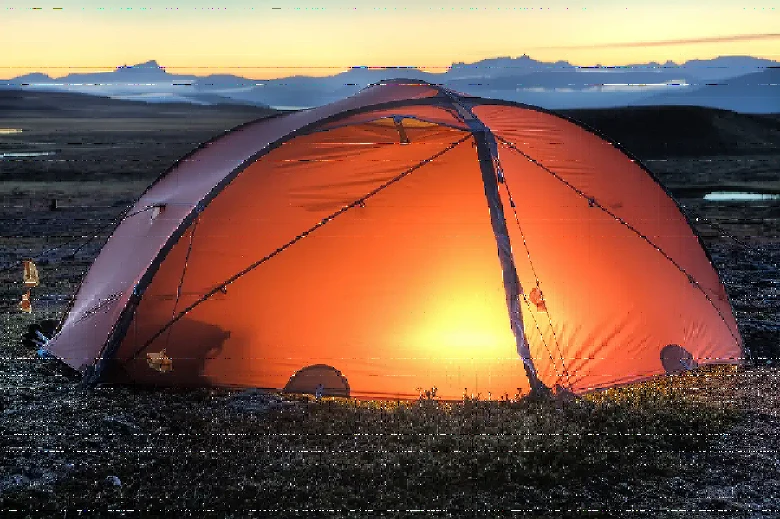
The UV radiation levels during much of the daytime for most of December and January in Australia is around 11 - that is extreme. Sunscreen should be part of your sun protection plan.
Fun fact: it is the fact that the sun is high in the sky, that the air is clear and low humidity that leads to the extreme UV levels. There is a popular misconception that the hole in the ozone layer is the cause of the extreme UV; but the hole is much further south so does not actually play a role.
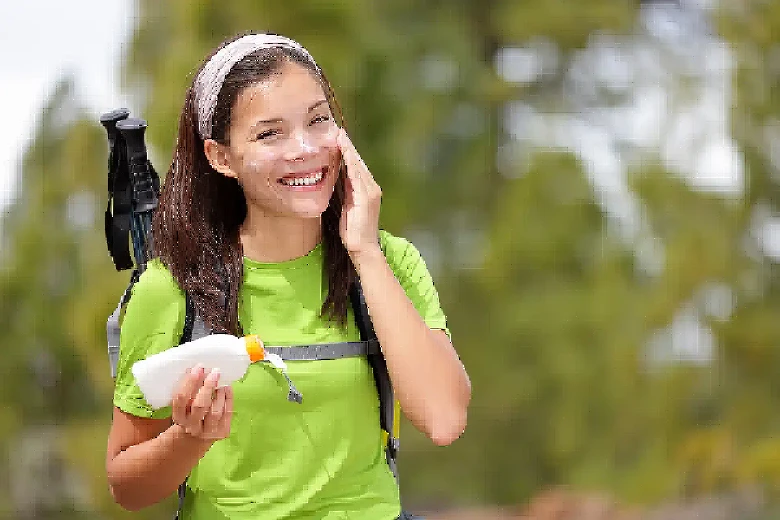
There are a few small but very annoying creatures you may well meet in the warmer months. March flies, mosquitoes, ticks and leeches. They can be rather persistent. DEET-based insect repellent is the most effective. Be mindful that DEET is only to be applied to exposed skin (it is best not to cover it and is not effective on clothing, and will may damage synthetic fibres).
Apply insect repellent around ankles (for leeches and mosquitoes) and face (for flies).
Some people may prefer to wear a hat and fly net over their head.
When it raining, remember at least there are no march flies out.
Just like your skin, your lips can get sunburnt and the UV on the Overland Track is higher than many other parts of Australia. The skin that forms your lips does not have hair or sweat glands, so it does not have the same natural protective layer of body oils as other skin. This is part of the reason your lips dry out faster and can become cracked, rough or sore. Lips can even blister with sunburn - not fun.
Lots of people love lip balm on longer walks. Get lip balm with an SPF rating of higher than 30. Also, get a lip balm that will not melt easily on hot days.
Gadgets & Electonics
Your phone can run this app, play music/podcasts (pack some headphones), be an ebook reader, a backup torch and a good camera.
Before setting off, make sure you download all the walks in the app. The maps work offline if you have already downloaded them.
It is worth packing your phone in a water and drop-proof case, or at the very least putting in a snap-lock bag to give it some protection.
Put your phone in aeroplane mode, power-saving mode, silent and turn the screen brightness right down to maximise battery life and minimise annoying other walkers.
Apps uses your phone's GPS, and the maps can be stored for offline use but phones are not the most power-efficient devices and the GPS not as sensitive as dedicated GPS units, so some people prefer to use a dedicated GPS unit for navigation. These can be handy in poor visibility, if you get lost or if you want to track your progress with minimal map reading.

Luxury Items (optional)
Some people carry SLR's with multiple lenses, some carry a smaller pocket-sized compact camera, and many people carry their phones to use as a camera. If you have the option of a waterproof camera, you will be able to enjoy taking photos in more varied conditions. The best images are ones that you actually capture, so whatever camera you carry; make sure you can access it readily, know how to use it and have plenty of batteries.

There's plenty of wildlife on track, a pair of binoculars will help you see them up close without disturbing them. We do list the more common birds and other creatures you will see on track in the app, but you may want to carry a field guide if you are also carrying binoculars. Pack them so you can quickly access them, but still protect them from the rain and bumps.

If you like to read in the evening, pack a book or an e-book. You might want to just curl up at the end of the day with a good book or learn more about the history, cultures, landscape or ecology of the areas you are walking through.

You might want to write a diary, or maybe write down phone numbers of new friends you get to know on the track.